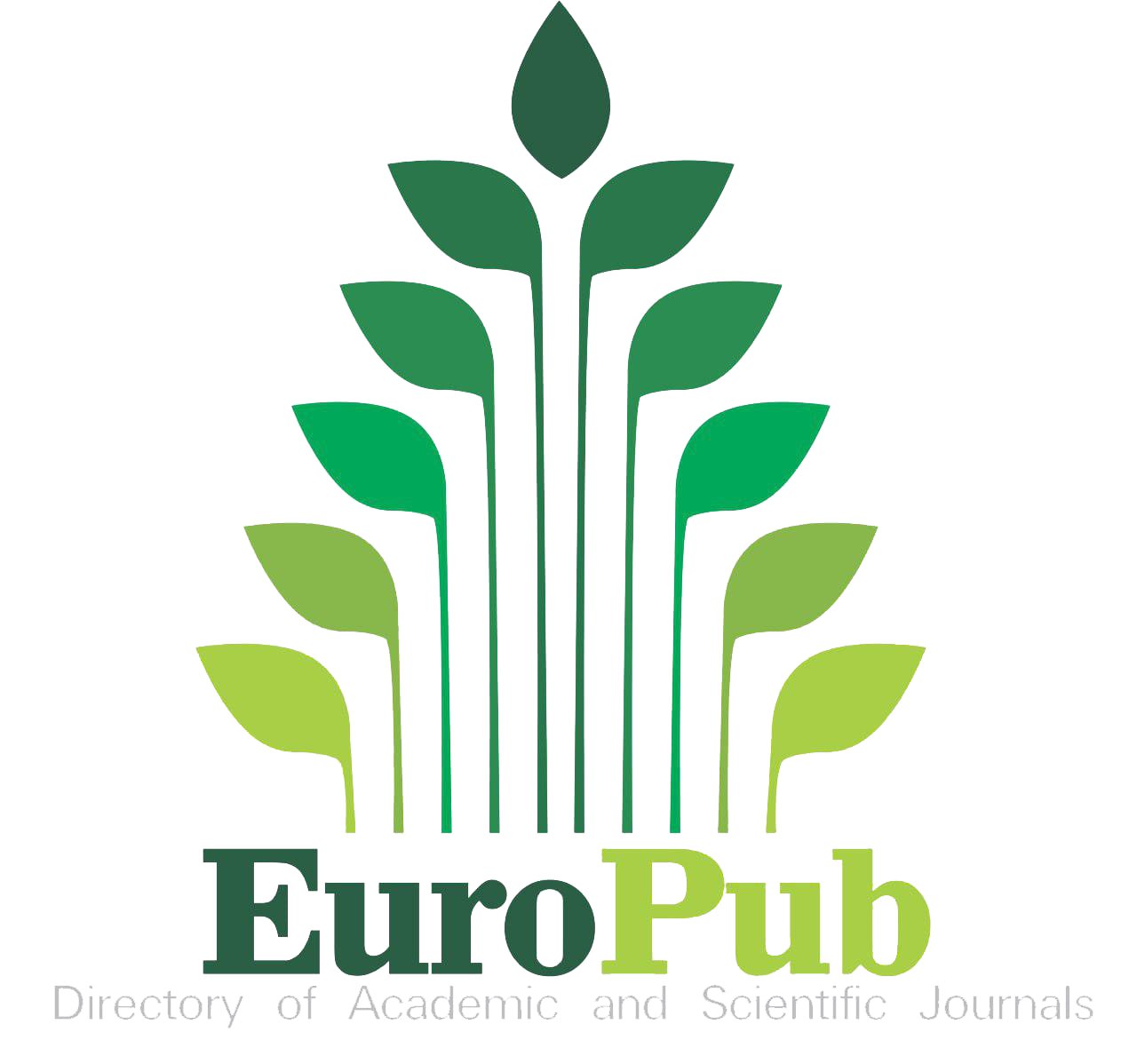Abstract
Currently, we synthesized silver nanoparticles (AgNPs) from the aqueous fruit extract of Carissa carandas L. and evaluated their antioxidant and antibacterial properties. The UV-visible spectra showed a characteristic absorption peak at 412 nm. The Fourier transform infrared (FTIR) spectroscopy exhibits intense peaks at 3430.23cm-1 and 1625.67cm-1 which indicates the involvement of flavonoids and other functional groups in the biosynthesis, capping, and stabilization of AgNPs. From XRD analysis, the average size of AgNPs was estimated to be 45nm. The biogenic AgNPs were spherical in shape and average size range between 10 to 95nm confirmed by HR-TEM analysis. The fabricated AgNPs by fruit extract were monitored for antioxidant activity using DPPH method. The fruit extract of AgNPs (IC50= 946.22μg/ml) had the highest antioxidant activity against standard ascorbic acid. The antibacterial activity was done using Staphylococcus aureus and Escherichia coli bacterial strains. It was found from the results that the bacterial strain S. aureus had the highest antibacterial activity when compared to E. coli and aqueous fruit extract. Thus, the present study exhibits synergistic antioxidant and antibacterial activity which may explore in future clinical treatment.
Recommended Citation
Daphedar, Azharuddin B.; Basavaprabhu, Tejashwini; Nilagar, Viashnavi; and Waddar, Annapoorna
(2023)
"Carissa carandas L. fruit mediated in vitro synthesis of silver nanoparticles and their antioxidant and antibacterial activities,"
Al-Bahir: Vol. 2:
Iss.
2, Article 1.
Available at: https://doi.org/10.55810/2313-0083.1019
References
- Tran QH, Nguyen VQ, Le A. Silver nanoparticles: synthesis, properties, toxicology, applications and perspectives. Adv Nat Sci Nanosci Nanotechnol 2013;4:033001. https://doi.org/10.1088/2043-6262/4/3/033001.
- Hemlata, Meena PR, Singh AP, Tejavath KK. Biosynthesis of silver nanoparticles using Cucumis prophetarum aqueous leaf extract and their antibacterial and antiproliferative activity against cancer cell lines. ACS Omega 2020;5:5520e8. https://doi: 10.1021/acsomega.0c00155.
- Tanase C, Berta L, Coman NA, Rosca I, Man A, Toma F, et al. Investigation of in vitro antioxidant and antibacterial potential of silver nanoparticles obtained by biosynthesis using beech bark extract. Antioxidants 2019;8:459. https://doi.org/10.3390/antiox8100459.
- Behboodi S, Baghbani-Arani F, Abdalan S, Sadat Shandiz SA. Green Engineered biomolecules capped silver nanoparticles fabricated from Cichorium intybus Extract: in vitro assessment on apoptosis properties toward human breast cancer (MCF-7) cells. Biol Trace Elem Res 2019;187:392e402. https://doi.org/10.1007/s12011-018-1392-0.
- Ashraf J, Ansari M, Khan H, Alzohairy MA, et al. Green synthesis of silver nanoparticles and characterization of their inhibitory effects on AGEs formation using biophysical techniques. Sci Rep 2016;6:20414. https://doi: 10.1038/srep20414.
- Khan F, Shariq M, Asif M, Siddiqui MA, Malan P, Ahmad F. Green nanotechnology: plant-mediated nanoparticle synthesis and application. Nanomaterials 2022;2(4):673. https://doi: 10.3390/nano12040673.
- Roy A, Bulut O, Some S, Mandal AK, Deniz Yilmaz M. Green synthesis of silver nanoparticles: biomolecule-nanoparticle organizations targeting antimicrobial activity. RSC Adv 2019;9:2673. https://doi.org/10.1039/C8RA08982E.
- Daphedar AB, Kakkalameli SB, Melappa G, Taranath TC, Srinivasa C, et al. Genotoxic assay of silver and zinc oxide nanoparticles synthesized by leaf extract of Garcinia livingstonei T. Anderson: a comparative study. Phcog Mag 2021;17:S114e21. https://doi:10.4103/pm.pm_536_20.
- Parlinska-Wojtan M, Kus-Liskiewicz M, Depciuch J, Sadik O. Green synthesis and antibacterial effects of aqueous colloidal solutions of silver nanoparticles using camomile terpenoids as a combined reducing and capping agent. Bioproc Biosyst Eng 2016;39:1213e23. https://doi:10.1007/s00449-016-1599-4.
- Anil Kumar S, Abyaneh MK, Gosavi SW, Kulkarni SK, Pasricha R, et al. Nitrate reductase-mediated synthesis of silver nanoparticles from AgNO3. Biotechnol Lett 2007;29(3):439e45. https://doi: 10.1007/s10529-006-9256-7.
- Jannathul Firdhouse M, Lalitha P. Biosynthesis of silver nanoparticles and its applications. J Nanotechnol 2015:829526. https://doi.org/10.1155/2015/829526.
- Singh D, Kumar V, Yadav E, Falls N, Singh M, Komal U, et al. One-pot green synthesis and structural characterisation of silver nanoparticles using aqueous leaves extract of Carissa carandas: antioxidant, anticancer and antibacterial activities. IET Nanobiotechnol 2018;12(6):748e56. https://doi: 10.1049/iet-nbt.2017.0261.
- Singh R, Hano C, Nath G, Sharma B. Green biosynthesis of silver nanoparticles using leaf extract of Carissa carandas L. And their antioxidant and antimicrobial activity against human pathogenic bacteria. Biomolecules 2021;17(2):299. 11, https://doi: 10.3390/biom11020299.
- Manjare SB, Sharmaa SG, Gurava VL, Kundea MR, Patila SS, et al. Biosynthesis of silver nanoparticles using leaf and bark extract of Indian plant Carissa carandas, characterization and antimicrobial activity. Asain J Nanosci Mater 2020;3:58e66.https://doi.org/10.26655/AJNANOMAT.2020.1.6.
- Bhakya S, Muthukrishnan S, Sukumaran M,Muthukumar M.Biogenic synthesis of silver nanoparticles and their antioxidant and antibacterial activity.Appl Nanosci 2016;6:755e66.https://doi.org/10.1007/s13204-015-0473-z.
- Jain S, Mehata MS.Medicinal plant leaf extract and pure flavonoid mediated green synthesis of silver nanoparticles and their enhanced antibacterial property.Sci Rep 2017;7:15867.https://doi: 10.1038/s41598-017-15724-8.
- Umashankari J, Inbakandan D,Ajithkumar TT,Balasubramanian T.Mangrove plant Rhizophora mucronata (Lamk,1804) mediated one pot green synthesis of silver nanoparticles and its antibacterial activity against aquatic pathogens.Saline Syst 2012;8(11).https://doi:10.1186/2046- 9063-8-11.
- Christopher JSG,Saswati B,Ezilrani PS.Optimization of parameters for biosynthesis of silver nanoparticles using leaf extract of Aegle marmelos.Braz Arch Biol Technol 2015;58(5):702e10.https://doi: 10.1155/2014/949538.
- Thiruvengadam V,Bansod AV.Characterization of silver nanoparticles synthesized using chemical method and its antibacterial property.Biointer Res Appl Chem 2020;10(6):7257e64.https://doi:10.33263/BRIAC106.72577264.
- Christy J,Dharaneya D,Vinmathi V,Packia J,Jacob S.A green nano-biotechnological approach for the synthesis of silver nanoparticles using the seed coat of Tamarindus indica, study of its antibacterial and anticancer activity.Int J Pharm, Sci 2015;7(1):192e4.
- Jemal K, Sandeep BV, Pola S. Synthesis, characterization, and evaluation of the antibacterial activity of Allophylus serratus leaf and leaf derived callus extracts mediated silver nanoparticles. J Nanomater 2017;11:4213275. https://doi.org/10.1155/2017/4213275.
- Mehta BK, Chhajlani1 M, Shrivastava BD. Green synthesis of silver nanoparticles and their characterization by XRD. Front Phy Plasma Sci 2017;836:012050. https://doi:10.1088/1742-6596/836/1/012050.
- Ravichandran S, Paluri V, Kumar G, Loganathan K, Rao B, et al. A novel approach for the biosynthesis of silver oxide nanoparticles using aqueous leaf extract of Callistemon lanceolatus (Myrtaceae) and their therapeutic potential. Exp Nanosci 2016;11(6):445e58. https://doi.org/10.1080/17458080.2015.1077534.
- Anandalakshmi K, Venugobal J, Ramasamy V. Characterization of silver nanoparticles by green synthesis method using Pedalium murex leaf extract and their antibacterial activity. Appl Nanosci 2016;6:399e408. https://doi.org/10.1007/s13204-015-0449-z.
- Luhata LP, Chick CN, Mori N, Tanaka K, Uchida H, et al. Synthesis and antioxidant activity of silver nanoparticles using the Odontonema strictum leaf extract. Molecules 2022;27:3210. https://doi: 10.3390/molecules27103210.
- Sumaira, Khan T, Abbasi BH, Afridi MS, Tanveer F, Ullah I, et al. Melatonin-enhanced biosynthesis of antimicrobial AgNPs by improving the phytochemical reducing potential of a callus culture of Ocimum basilicum L. var. thyrsiflora. RSC Adv 2017;7:38699e713. https://doi.org/10.1039/C7RA05044E.
- Shah M, Nawaz S, Jan H, Uddin N, Ali A, Anjum S, et al. Synthesis of bio-mediated silver nanoparticles from Silybum marianum and their biological and clinical activities. Mater Sci Eng 2020;112:110889. https://doi.org/10.1016/j.msec.2020.110889.
- Afreen A, Ahmed R, Mehboob S, Tariq M, Alghamdi HA, et al. Phytochemical-assisted biosynthesis of silver nanoparticles from Ajuga bracteosa for biomedical applications. Mater Res Express 2020;7(7):1e14. https://doi:10.1088/2053-1591/aba5d0.
- Das R, Gang S, Nath SS. Preparation and antibacterial activity of silver nanoparticles. Biomater Nanobiotech 2011;2:472e5. https://doi:10.4236/jbnb.2011.24057.
- Aritonang HF, Koleangan H, Wuntu AD. Synthesis of silver nanoparticles using aqueous extract of medicinal plants' (Impatiens balsamina and Lantana camara) fresh leaves and analysis of antimicrobial activity. Internet J Microbiol 2019;8:8642303. https://doi.org/10.1155/2019/8642303.
- Ramkumar VS, Pugazhendhi A, Gopalakrishnan K,Sivagurunathan P, Saratale GD, et al. Biofabrication and characterization of silver nanoparticles using aqueous extract of seaweed Enteromorpha compressa and its biomedical properties. Biotechnol Rep 2017;10(14):1e7. https://doi: 10.1016/j.btre.2017.02.001.
- Yin IX, Zhang J, Zhao IS, Mei ML, Li Q, Chu CH. The antibacterial mechanism of silver nanoparticles and its application in dentistry. Int J Nanomed 2020;15:2555e62.https://doi.org/10.2147/IJN.S246764.
- Ahmad SA, Das SS, Khatoon A, Ansari MT, Afzal M, Hasnain MS, et al. Bactericidal activity of silver nanoparticles: a mechanistic review.Mater Sci Energy Technol2020;3:756e69.https://doi.org/10.1016/j.mset.2020.09.002.
- Siddiqi KS, Husen A, Rao RAK.A review on biosynthesis of silver nanoparticles and their biocidal properties.J Nanobiotechnol2018;16(14).https://doi: 10.1186/s12951-018-0334-5.
- Das S,Mahabul L,Belwal VK,Roy AS.Biocompatible silver nanoparticles: an investigation into their protein binding efficacies, anti-bacterial effects and cell cytotoxicity studies.Pharma Anal2021;11:422e34.https://doi.org/10.1016/j.jpha.2020.12.003.















Indexed in: